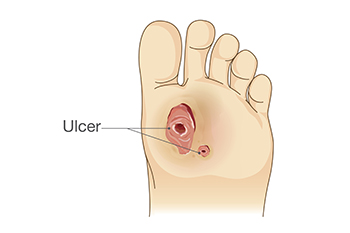Connect With Us
Blog
Items filtered by date: August 2025
Do You Suffer From Painful Feet?
Choosing the Right Trail Running and Mountaineering Shoes

Selecting proper footwear for trail running and mountaineering is essential for comfort, performance, and injury prevention. Shoe cushioning choices include high for maximum shock absorption, moderate for a balance of comfort and ground feel, and minimal for a natural, lightweight experience. Energy return is also important, as it helps reduce fatigue during long treks and challenging terrain. Proper fit, traction, and durability are key characteristics for safely navigating uneven or rocky surfaces. A podiatrist can evaluate your foot type, gait, and activity level to recommend the best running shoe for your needs. If you have sustained a foot or ankle injury while running, it is suggested that you consult a podiatrist who can provide treatment, and guide you on appropriate shoes to wear.
You should always make sure your running shoes fit properly in order to avoid injury. For more information, contact Robert Hutchison, DPM, FACFAS from Lower Keys Foot & Ankle Surgery. Our doctor can provide the care you need to keep you pain-free and on your feet.
Choosing the Right Running Shoe for Your Foot Type
Improper shoe sizing can cause a myriad of problems for your feet. Shoes that don’t fit you properly can lead to muscular imbalances in your body, which can result in foot, knee, and hip injuries.
Tips for Finding the Right Running Shoe
- Make sure you have a thumb’s width of wiggle room between the end of your longest toe and the front of the shoe.
- There should be little to no slipping at the heel
- Don’t assume your size in one shoe brand will be your size in another
- Do not lace up your shoes too tightly
- Walk around in the store with your new shoes before you buy them
If you have any questions please feel free to contact our our office located in Key West, FL . We offer the newest diagnostic and treatment technologies for all your foot and ankle needs.
Caring for Diabetic Foot Ulcers

A diabetic foot ulcer is an open wound or sore that typically forms on the bottom of the foot in individuals with diabetes. Poor circulation and reduced sensation increase the risk of skin breakdown, making even minor injuries potentially serious. Proper care includes keeping the ulcer clean, covered, and protected from pressure. Managing blood sugar levels and inspecting the feet daily are also important. A podiatrist provides expert wound care, offloading solutions, and guidance to prevent infection and promote healing. If you have diabetes and notice a sore on your foot, do not delay. It is suggested that you are under the care of a podiatrist who can effectively treat diabetic foot ulcers, and help you to manage this serious condition.
Wound care is an important part in dealing with diabetes. If you have diabetes and a foot wound or would like more information about wound care for diabetics, consult with Robert Hutchison, DPM, FACFAS from Lower Keys Foot & Ankle Surgery. Our doctor will assess your condition and provide you with quality foot and ankle treatment.
What Is Wound Care?
Wound care is the practice of taking proper care of a wound. This can range from the smallest to the largest of wounds. While everyone can benefit from proper wound care, it is much more important for diabetics. Diabetics often suffer from poor blood circulation which causes wounds to heal much slower than they would in a non-diabetic.
What Is the Importance of Wound Care?
While it may not seem apparent with small ulcers on the foot, for diabetics, any size ulcer can become infected. Diabetics often also suffer from neuropathy, or nerve loss. This means they might not even feel when they have an ulcer on their foot. If the wound becomes severely infected, amputation may be necessary. Therefore, it is of the upmost importance to properly care for any and all foot wounds.
How to Care for Wounds
The best way to care for foot wounds is to prevent them. For diabetics, this means daily inspections of the feet for any signs of abnormalities or ulcers. It is also recommended to see a podiatrist several times a year for a foot inspection. If you do have an ulcer, run the wound under water to clear dirt from the wound; then apply antibiotic ointment to the wound and cover with a bandage. Bandages should be changed daily and keeping pressure off the wound is smart. It is advised to see a podiatrist, who can keep an eye on it.
If you have any questions, please feel free to contact our office located in Key West, FL . We offer the newest diagnostic and treatment technologies for all your foot care needs.

